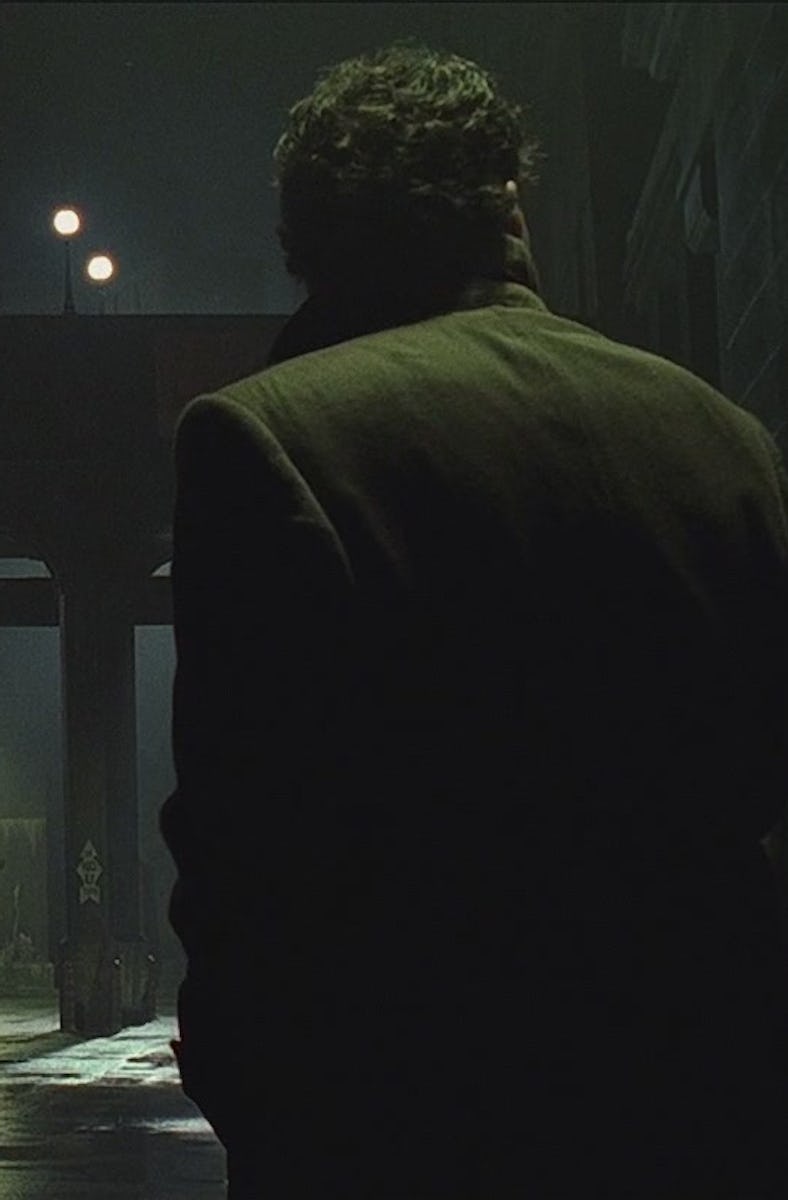Dark City Was The Matrix’s Brooding Existential Cousin
Gorgeous and disquieting, Alex Proyas’ best film remains stunning.

Much of the praise showered on The Matrix in 1999 was directed at Hugo Weaving. His memorably villainous Agent Smith could be anywhere at any time, and fittingly, few could escape the stranglehold The Matrix took on pop culture. The references, rip-offs, outfits, and moral scares were everywhere, although by the time Shrek and Scary Movie parodied it, we were all wishing they weren’t.
Dark City, despite being declared Roger Ebert’s best film of 1998, didn’t enjoy relentless meme-ification. It didn’t enjoy much of anything, really, beyond a smattering of second-tier awards and a poor box office return. Most reviewers weren’t as enthusiastic as Ebert, who said the film excited him in the way A Space Odyssey and Metropolis had, but no one was too harsh either. And everyone could agree that the production design was stunning.
Articles about Dark City are legally obligated to mention that The Matrix reused some of its sets, and are encouraged to then debate their respective merits. Some go further and accuse The Matrix of ripping its predecessor off. It’s a simplistic accusation, but you can see where it comes from: Everyday schlubs with an aversion to melanin have the true nature of their dour existence revealed, then grow into revolutionary chosen ones with immense power who must battle a relentless pursuer, who’s elevated above his sinister colleagues but goes a bit mad in the process.
But while The Matrix was influenced by anime and Hong Kong martial arts, Dark City is pure noir. Rufus Sewell’s John Murdoch wakes up in a grimy hotel to a dead dame, a mysterious postcard from Shell Beach, a bad case of forgetfulness, and a phone call telling him to move his ass (yet another thing The Matrix ripped off). He does, but not before taking a moment to aid a floundering goldfish, inadvertently convincing William Hurt’s laconic Inspector Bumstead that he’s not dealing with an ordinary villain. Throw in Kiefer Sutherland’s creepy doctor and a crooning Jennifer Connelly, and you have all the ingredients for a modern Raymond Chandler pastiche.
But there’s a sci-fi twist, one so big it’s difficult to discuss Dark City without spoiling it. New Line Cinema worried it would be difficult to watch without spoiling it, and forced the inclusion of an introductory Sutherland voiceover that amounted to, “Hey, you dunderheaded popcorn munchers, the ‘Rosebud’ we’re going to keep mentioning? It’s that Kane guy’s childhood sled.” The director’s cut mercifully drops this imposition, and suffice to say that, when Murdoch witnesses the entire city fall asleep at midnight before pale weirdos in trench coats emerge to shuffle people around and reshape buildings with their minds, a murder rap suddenly becomes the least of his concerns.
Sewell’s Murdoch looks like he’s in perpetual need of cheap whisky and a cigarette.
If The Matrix made you wonder if your life is a lie, Dark City makes you wonder if life, as you understand the very concept, is a lie. It’s weirder, colder, more unsettling, the grumpy existential cousin to Neo’s simple fable. Having the true nature of reality revealed to you may answer some of your questions, but it also raises more. Some of those questions may never be answered, but you just have to keep pushing forward anyway. You can argue that The Matrix executed its ideas better, but it’s Dark City that sits with you at night.
It also, for the most part, remains as disquietingly gorgeous as it was when James Berardinelli first said it had “as stunning a visual texture as that of any movie that I’ve seen.” The resolutions of big reveals are rarely as interesting as the reveals themselves, and Dark City suffers from a clunky, aged final fight. But everything that leads up to it — the grimy automats, the smoky nightclubs, the anachronistic slurry of telephone booths and typewriters, the skyscrapers that tumble and twist upon command — is mesmerizing.
Some of this can be chalked up to the vision of director Alex Proyas, who previously helmed the stylishly silly The Crow. In a retrospective interview with vfxblog, colorist Peter Doyle argued the film was made during a brief, intriguing period where digital effects had become powerful enough to perform mighty deeds but were still limited enough that everyone on the team could interact with the director instead of getting shoved onto an assembly line that offered no insight on the big picture.
And the big picture in Dark City gets... weird.
Screenwriters Lem Dobbs and David S. Goyer also deserve credit. It may be reductive to point out that Dark City is, indeed, a dark film, but that doesn’t make Murdoch’s quest to find answers on sunny Shell Beach any less aching. Everyone has heard of it, but no one can remember how to get there, and by the end you want Murdoch to succeed just so he — and you — can enjoy a locale that isn’t another shadowy alley or rundown train station. The chronically underappreciated Sewell plays Murdoch as a haunted man, a reluctant hero who treats every twist and turn as another confounding indignity. It’s a performance that enhances the exhaustion of his quest to figure out what the hell is going on, and the pathos when the poor guy finally catches a break.
None of these many positives prevented Dark City from being forgotten by all but dorky genre buffs. So is it better to be remembered for your memes, or to be barely remembered at all? Dark City wasn’t saddled with a trio of sequels that devolved into slogging Philosophy 201 lectures, but Proyas has retreated from Hollywood since completing the thankless tasks of making Knowing and Gods of Egypt. Maybe this question, like those that Dark City poses, is unanswerable. But the question of whether the movie holds up a quarter century after release is straightforward.
This article was originally published on